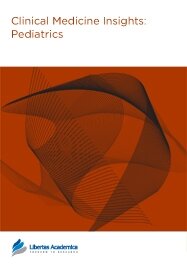

Publication Date: 05 Nov 2008
Journal: Clinical Medicine Insights: Pediatrics

1School for Health, University of Bath, Bath, U.K. 2Department of Social Medicine, University of Bristol, Bristol, U.K. 3Department of Oral and Dental Science and Department of Social Medicine, University of Bristol, Bristol, U.K.
Abstract
Advances in technology have improved our ability to measure physical activity in free-living humans. In the last few years, several large epidemiological studies in Europe and the United States have used accelerometers to assess physical activity in children and adolescents. The use of accelerometers to study physical activity has presented some challenges on how to summarise and interpret the data that they generate, however these studies are providing important information on the levels and patterns of physical activity among children and adolescents. Some studies have reported that few children and adolescents appear to meet the recommended minimum of 60 minutes of moderate to vigorous activity per day. Accelerometers have also allowed examination of the relationships between physical activity and health outcomes like obesity and other chronic disease risk factors such as insulin resistance, aerobic fitness, blood lipids and blood pressure. Use of accelerometers allows such relationships to be estimated with a precision that was previously impossible with self-report measures of physical activity. Such information is already advancing our understanding of the role that physical activity plays in preventing childhood obesity and cardiovascular disease risk.
PDF (244.26 KB PDF FORMAT)
RIS citation (ENDNOTE, REFERENCE MANAGER, PROCITE, REFWORKS)
BibTex citation (BIBDESK, LATEX)
Our experience publishing in Clinical Medicine Insights: Oncology was the easiest and most user-friendly interface we have encountered. The staff were very attentive to us and kept us posted at every step of the process. It was rewarding to have our article appear in press within weeks, compared to months at other journals.

All authors are surveyed after their articles are published. Authors are asked to rate their experience in a variety of areas, and their responses help us to monitor our performance. Presented here are their responses in some key areas. No 'poor' or 'very poor' responses were received; these are represented in the 'other' category.See Our Results
Copyright © 2013 Libertas Academica Ltd (except open access articles and accompanying metadata and supplementary files.)
FacebookGoogle+Twitter
PinterestTumblrYouTube